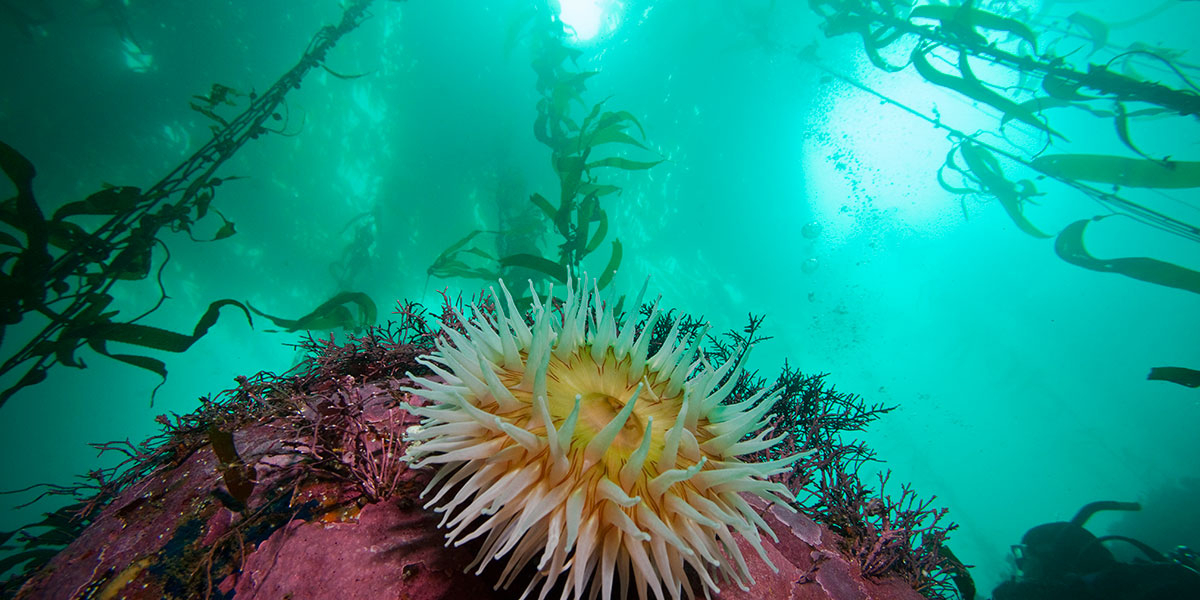NOPP 2016 EXCELLENCE IN PARTNERING AWARDEE

National Marine Sanctuaries as Sentinel Sites for a Demonstration Marine Biodiversity Observation Network (MBON)
Lead PI: Frank Muller-Karger, University of South Florida
Co-PIs: Francisco Chavez, Monterey Bay Aquarium Research Institute; Scott Doney and Maria Kavanaugh, Woods Hole Oceanographic Institution; Enrique Montes, USF; Steve Gittings, NOAA Office of National Marine Sanctuaries
The Sanctuaries Marine Biodiversity Observation Network (MBON) project seeks to provide near real-time information on the status and trends of life in the sea. The project is designed to monitor changes in marine biodiversity in two US National Marine Sanctuaries — Florida Keys and Monterey Bay, working jointly with the NOAA Office of National Marine Sanctuaries and the U.S. Integrated Ocean Observing System (IOOS). In 2016, the team made funds available to explore potential expansion of the project into the Flower Garden Banks National Marine Sanctuary.
The overall objectives of the Sanctuaries MBON project are to:
- Integrate and synthesize information from ongoing monitoring programs coordinated by the U.S. IOOS;
- Define the minimum set of observations required for implementing a practical, useful MBON;
- Develop technology for biodiversity assessments through emerging environmental DNA (eDNA) molecular methods and autonomous sample collection;
- Develop new methods for the detection and tracking of biogeographic seascapes using advanced satellite remote sensing methods;
- Integrate biodiversity measurements in a relational database that links to national and international databases and that informs NOAA’s emergency response system;
- Establish a protocol for MBON information to dynamically update Sanctuary status and trends reports; and
- Understand the linkages between marine biodiversity and the social-economic context of a region.
Sanctuaries MBON is one of three NOPP demonstration projects launched in Fall 2014 with funding from NASA, NOAA’s Office of Ocean Exploration and Research, BOEM, and U.S. IOOS, plus an initial investment from Shell Oil. Funding partners for the national MBON effort have expanded to include NSF’s Division of Polar Programs. MBON also relies on strong partnership with the U.S. Geological Survey’s Ocean Biogeographic Information System (OBIS) team.
The Sanctuaries MBON team is leading coordination and leveraging resources with the two other MBON demonstrations (Santa Barbara Channel BON and Arctic MBON) towards development of a truly national MBON. They are also contributing to development of the global MBON through the Group on Earth Observations Biodiversity Observation Network (GEO BON) and the Global Ocean Observing System.
The MBON demonstration projects are 5-year efforts, with work continuing until summer 2019.
The NOPP Excellence in Partnering Award was presented to collaborators of the Sanctuaries MBON at the MBON All-Hands Meeting on May 26, 2017 in Washington D.C. To read more about the ceremony, click here.
Want to learn more about the MBON project? Check out their website!




